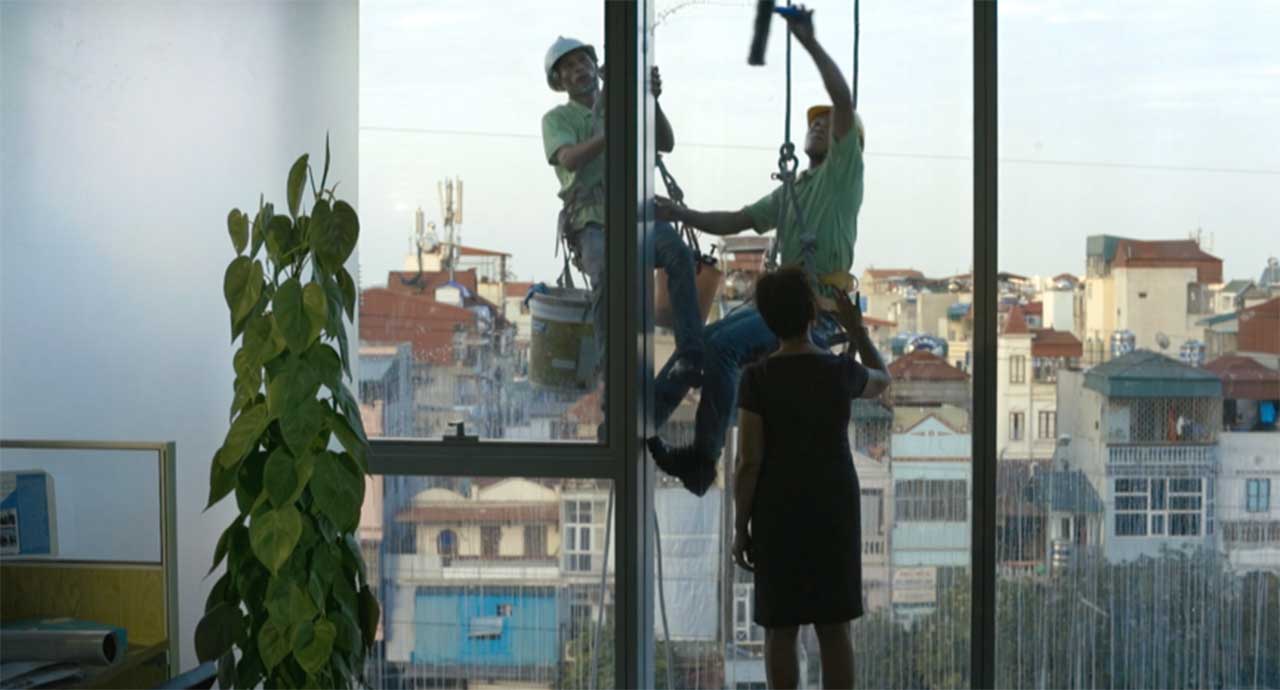Art, Artifice and the Arthouse
This article contains spoilers.

In a high-rise building, a middle-aged woman reaches out to the window washers, trying to grasp soapy rivulets of water in her hand, but she is separated by a thick panel of glass. In a dilapidated house, a young girl attempts to knock on the painting of a door, but she is denied the opportunity; the painting disappears, hoisted up like a set piece during a scene transition. In Dutch painter, Johannes Vermeer’s The Art of Painting, the artist’s hand similarly hovers before a canvas, but it is an indistinct tawny lump – is it his hand? Or is it a painted pear? Art and reality collide on a picture plane. Who is to say which is which?
Arthouse films now typically refer to independently-produced films that are not designed for mass appeal, possessing some sort of experimental or symbolic content and lacking any clear narrative that mainstream cinema might offer. What the Southeast Asian Short Film programs offer instead is a different, concentrated aesthetic experience. These films may not offer all the answers that we seek, but it only requests that we surrender to it, and you have just about every right to be critical or confused – for sometimes, that may just be the point of it all.
We find varying degrees of realism and stylization in Pham Ngoc Lan’s Another City and Pimpaka Towira’s Prelude to the General, and to different ends: loneliness and ennui versus oppression and danger. The non-diegetic sound design of both films further underscores this distinction, with Pham opting for an ironic schmaltzy love song that forms a refrain and Towira juxtaposing a folk song with an ominous, spectral tinkling. Unlike a mainstream blockbuster that might seek to lure you into its cinematic universe, these films do the exact opposite, alienating the audience from the characters and pointing out that what you see before you is a piece of fiction.
In Another City, a peculiar theatricality suffuses each scene, with the actors donning on a certain self-reflexivity that further distances the audience from the emotional core of these characters. Take the opening scene for example: a white studio-like space. A woman poses with a paper bag of tubular vegetables silently. She then proceeds to remove her wig. The camera then cuts to a young man singing a cheesy ballad (Lâu Đài Tình Ái) in a similarly dissociating interior – one that is wallpapered with the image of a waterfall and accented by disco lights. Staginess has dovetailed into kitsch.

Later, the contrived quality of the film manifests itself in an awkward and unexplained waltz between the dumped man and the middle-aged woman. It feels like amateur hour, with little kinks in their performance, and the scene ending with a frontal shot of the duo posing, as though they were contestants in a dance competition. Emotionally islanded, each character harbors glimpses of an inner tragedy.

On the other hand, Prelude to the General is shrouded in mystery. The camera deliberately announces its voyeuristic presence here, with the beaded curtain shown to be parting for the camera. A girl is shown to be wandering about an empty house. Like her, we are uncertain of where she actually is. She appears to be walking along a corridor in a multistory building, but as the camera brings the two-dimensional background into focus, the building turns out to be a painting. Upon a further continuous close-up, the brushstrokes become steadily apparent. Towira is intent on exposing how the perceived spatial depth is a lie.
This trick-of-the-eye moment is textbook arthouse cinema, ditching mainstream conventions of believability. Reality here is but an illusory concept. Deception and subterfuge take center stage. Picasso said that art is the lie that tells the truth, and in this world that Towira’s presents, she not only shows us the inner workings of this lie (art), but also reveals that the truth is not necessarily a palatable one (Thailand’s military dictatorship).
Like Another City, communication between characters is minimal. The woman and the girl only appear in the same frame in the opening scene and are subsequently shot separately. Curiously, however, they are captured by a long panning shot at the start and the end of the film, one that is almost panoramic in style. Physical distance here is made concrete by the camera, and like the viewer, the woman can only be a helpless eyewitness.
Après moi le déluge. Both films end with images of water. The characters of Another City have their backs toward us as they face a thunderous waterfall, whereas Prelude concludes with a drowned Ophelia, whose pallid face appears amidst the duckweeds. Liberation from an urban malaise can only take place before nature and the sublime, but in Thailand, the enduring presence of the junta can only lead to a watery grave.
With art and deliberately constructed artifice featuring heavily in their short films, Pham and Towira have clearly jettisoned the conventions of mainstream cinema, through oblique narratives, non-diegetic sound design and stylized sequences. As viewers of the arthouse, this puts us at a critical distance, but it is a distance that engenders a greater appreciation of the medium of film.
Two female characters extend a hand, seeking to grasp the unknowable but ultimately denied of any contact. We wish to access the imperceptible territories of their thoughts, to intimate with the truth, to run our fingers along the ragged edges of the real. Like them, our hand reaches out.



